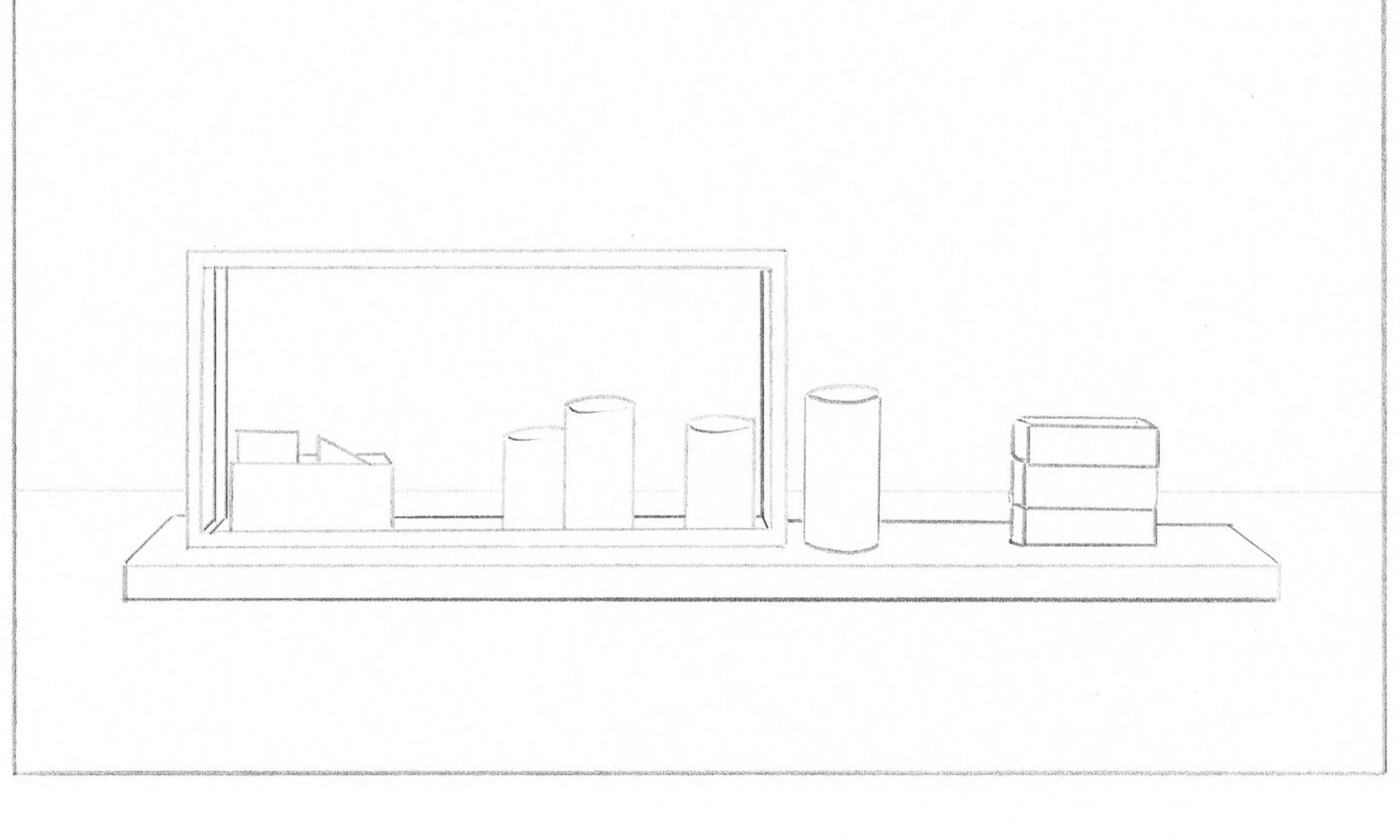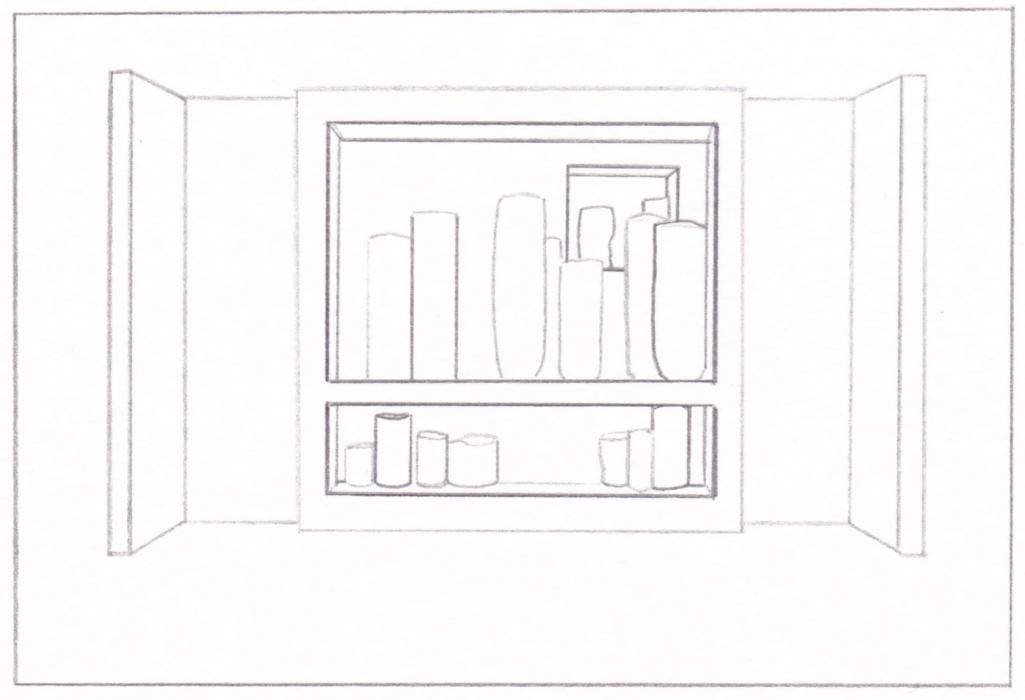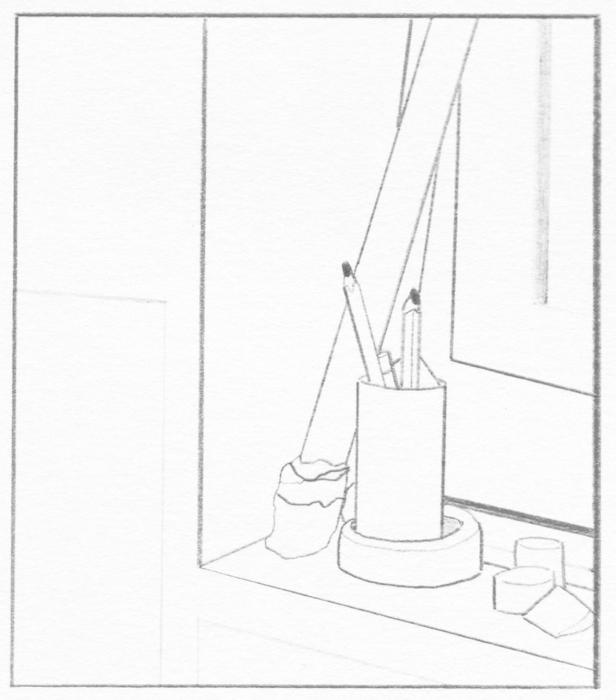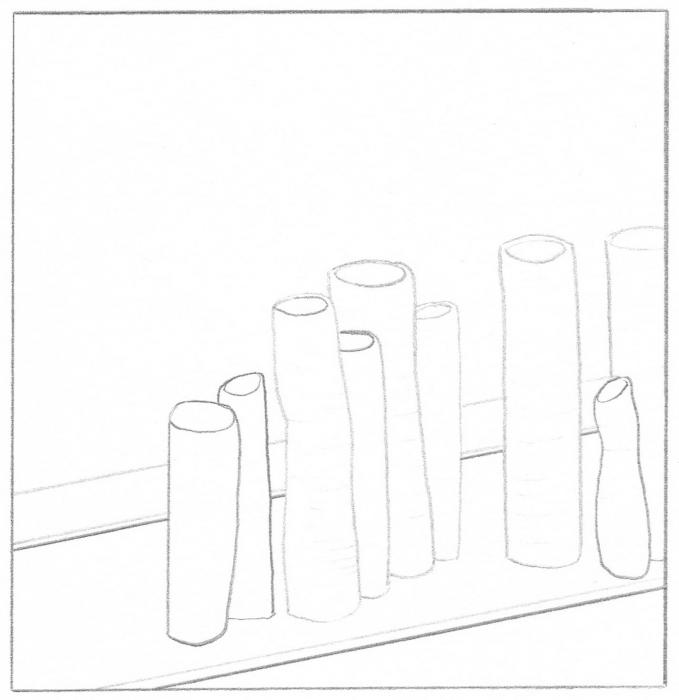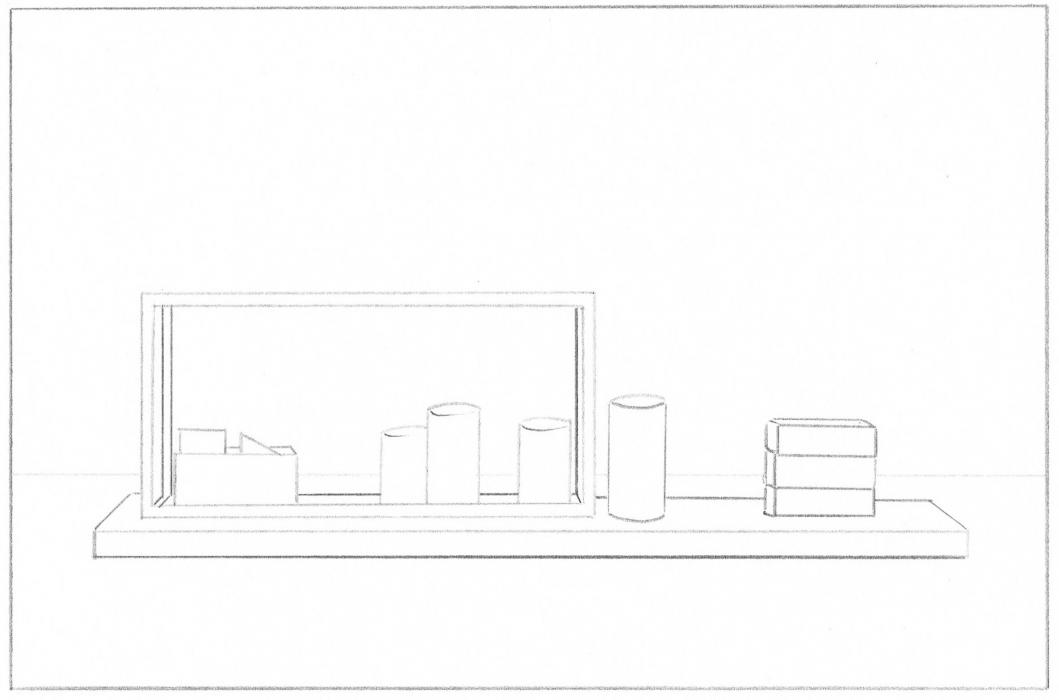Letters to Edmund – or ways to navigate transitional space
As an artist I have long been fascinated with attempting to measure the space between myself and the world; alongside the material and conceptual aspects of my art practice. In the becoming that takes place in the creation of an object or an idea, a photograph or a drawing, there is a certain kind of adaption which occurs within the internal life of the imagined that has interested me.
We all carry personal sensitivities around our imaginary relationships with our heroes. Some are private and secured, others we proclaim loudly with heartfelt passion. Throughout time we weave, layer meaning, and inherently lose control of the line between us and them. There are sensitive psychological boundaries one must traverse when encountering the fictional narratives we build for ourselves in service to our art praxis.
In this particular instance, I examine the imagined space between myself and artist Edmund de Waal. A series of fictional letters attempts to capture the transitional space of creative life, treading a line between two separate kinds of space; a sacred private space which exists between us and our heroes; and a liminal, productive space between artists and their work.
This is a fictitious exchange of ideas surrounding the relationship between de Waal, his material practice of porcelain ceramic production and the touch which inhabits the conceptual and material foundations of his work. The letters are affectionate, filled with personal inflection, and at the time of their writing, occupied a space in my own art praxis in which I was attempting to unravel the relationships between an artist, their materials and their research.
On revisiting these letters now, almost two years after having written them, there are gaps. There are moments of entanglement where I can see how I felt at that particular time; how much it must have meant to me to put those words down on paper. And there are other places where I want to correct myself, say no, or offer a different opinion or verb. Like re-reading anything you have spent time away from, the words lift in different ways and are at times cumbersome and hard to say or agree with. For these reasons, they have been edited, not to correct so much as to clarify.
Dear Edmund,
We know each other well, but do not often speak; not in words. Until now our correspondence has been entirely tacit.
I am the touch that occupies and forms the objects you create, these vessels of thingness, the spaces opened by the gentle coaxing pressure between your fingertips. I become the object you create through the transitional space that exists between you and a ball of porcelain clay.
I do not write you out of any want, other than to open a dialogue around this space between us: a space of materialisation through thought and idea. Existing as such an intangible and diasporic sensation, performing an action between you and this object that is created; I am at the edge of what you could call the turn of breath [1] or the destruction of illusion [2]; the making of something real [3].
I am both the cool resonance of tactility felt by the skin and nerves at the edge of the fingertip, as much as I am the grip of something held in the warmed palm of the hand. I am the touch that gives and responds; communicating across this space from past to present and from the metaphysical to the material.
You become [4] me when you craft these vessels. You are not separate from me, any more than you are separate from the porcelain that slips and pools over the edges of your hands and fingertips. That through this transitional space, I turn these illusions, these ideas and thoughts into object and thing.
I am as much a mental space as I am a physical space. I am at once the transformation of a material, and the physical manifestation of an idea. I am the sensation of touch, but also that of tact; sensitivity and thoughtfulness. I am haptic, an elusive series of movements and gestures which are carried on through the objects you make and handle.
What is it about this tact, this kindliness that is so important to you? What space do I occupy in your world? What element of me survives in your work?
Warmly yours,
Touch
Dear Touch,
Thank you for your letter, I must admit that I’ve not before corresponded with one of my senses quite like this. You are correct, of course, when you say that our correspondence has always been tacit, until now.
I will start by stating with the utmost certainty that touch does survive. Touch is the life history of an object. [5] Touch becomes what is carried through time, just as this letter will be delivered to its recipient, touch delivers an object its place in the world. Touch is auxiliary to the force with which the breath is exhaled before the breathturn. In this way, you and I are one and the same.
You exist within each turn of my potter’s wheel. Every blade press of the potter’s knife. Each imprint. Each vessel is carried through time by touch. Of course, this tactility is in everything. In every object made. In every line of poetry. In each note of music. There exists this touch that heaves things out into the world.
Yet, there is also the intimacy of touch which stays within an object—within my making there survives an enormous amount of touch. You can see touch, but you can also feel touch. The importance of the feeling of touch is that it communicates, and it is felt my another. Lumps of clay are called bodies, clay body, this seems like no coincidence, in the case of touch.
It is important to know, and remember, that touch is not only a force which creates, but it is also an emotive gesture; it wounds and it heals. Touch is a sadness, a lightness of heart, a kind embrace, the movement of laughter. It is a thing, which is passed along, like memory, through objects.
And within my vessels, on every shelf of each vitrine; in every shard of a broken pot, you lie waiting to ignite another layer of memory, a shy immortality. Even now, in writing this letter, I am evoking touch, with the press of pencil on paper. You exist within everything that is touched.
Yours sincerely,
Edmund
Dear Edmund,
In a strange game of alchemy, I became a body of clay. A blend of kaolin and petunse. I then awaited becoming something changed, something singular.
Your hand reaches into a small pile of clay balls and emerges with this few grams of alchemic history; wet and slippery, ready to become. And then with a sudden voracious energy, between your two hands you bounce the formless materiality of my contingent clay body, before I am thrown onto the moderate centre of the potter’s wheel. With a quiet, almost rehearsed nudge with the interior of your hand, I begin to centre.
You push down into the heart of this plastic, pulsating, wet lump of hermetic material before you; drawing up an internal and external space from a formless mound. The fine edge of a vessel rotating, with small rings of finger-touch pooling into spirals of orbiting, milky liquid.
Your hands cup around the base of my new vessel form; your eyes follow my profile. With the pull of a wire, I am lifted with your two large hands, so delicately, like wings, they carry me away, to a clay-stained board beside you.
Yet, I am not destined to become a pot of perfection, of splendour and purity, but one of complication and abstraction. Once I have been plucked from the potter’s wheel and set aside to dry in the cool air of the studio; I harden slowly, no longer plastic and malleable.
I am handled, touched, slowly edited and shaped. Pressed into with finger and thumb. Cut into and returned to by your hand and your eye. A sudden thud of the palm of your hand against my leather-hard wall. The sharp imprint of your seal.
Fire makes me become something else entirely. A complicated sensation of hardening and melting, making me feel both lighter and more rigid. Then I plunge into the milky depths of a buttery liquid the colour of clotted cream; somehow sticky and chalky at the same time; it sat uncomfortably on me as it dried. Then fire once more.
And of course, you know this. But what you may not know or understand is how much a part of you I am. I do not sit amongst your flesh or in a serotonergic space in your mind; yet I am created and become within this transitional space of your creativity.
I can only exist, when you create me; when you recall some exact illusion, some idea from your mind and make me, only then do I become this object. I am a substrate in waiting for the transition into selfhood. Until you pick up a body of clay and begin the process of making me; I am simply a thought, a fantasy; waiting to become object.
You are known not only to be a maker of pots, but also of fragments, of shards. Will I become a shard on the side of the de Waal mountain of broken porcelain vessels?
Please, speak to me of objects, of thingness, of memory.
Best,
Object
Dear Object,
Thank you for writing; for sharing your experience of becoming one of my vessels. It is marvellous to know that you have questions for me.
My art practice has never been about one object or one vessel; it is about repetition. Taking a lump of clay and making a vessel. A continued iteration. What I am making is a breath: an internal space. A liminal space. A form.
This entire process began long before the three bags of porcelain clay I purchased for my Sheffield studio in 1988. [6] The arrival of this becoming happened 49 years ago as a five-year-old boy turning my first pot, glazed white, with a splash of blue. White itself is a thing; it has a particular thingness about it.
I elucidated recently in an interview regarding my exhibition at Artipelag in Sweden, that ‘one of the joys of making over a long period of time, decades, your fingers and your body know what they are doing. You don’t have to instruct them. I love taking something that is formless and making something which has some structure, has some sense of form around it. Because I’ve done this for so many decades now, year after year after year, it’s really become the way I think about myself. It’s become entirely part of my life. When I need to make something I’m often mesmerised or haunted by an idea or by a piece of poetry. A line from poetry, a word sometimes, or a piece of music, or a space that I’ve been thinking about, a particular place that I want to kind of question, by making something for it. So, there are all these different possibilities when I begin. I am grounded in the history and culture of the materials I use. This extraordinary two-thousand-year history of porcelain. I don’t use this material lightly. It’s not a light material. It’s got incredible resonance, incredible power.’ [7]
My installation entitled Irrkunst, speaks to this transformation of white to something other, in the blackness of its porcelain vessels; like milk, curdled. And how there is a terrible beauty in this blackness, of one material on the edge of becoming another. In this there is a kind of silence. [8] This may go some way to explain what happens when I make pots, this edge of one material becoming another, that is where you exist.
Everyday my thoughts are full of poetry, music, memory, stories, and more than anything my thoughts are full of all the unromanticised facts of life. Has the dog been vaccinated? Is Anna’s science project due this week, or next? How long can I avoid emails from my publisher? My thoughts are always full of everything. But when I can gain a clear moment, my thoughts are of making.
Walter Benjamin spoke of memory as ‘…not an instrument for exploring the past, but rather a medium. It is the medium of that which is experienced, just as the earth is the medium in which ancient cities lie buried… the “matter itself” is no more than the strata which yield their long-sought secrets only to the most meticulous investigation. [Memories]…reside as treasures in the sober rooms of our later insights––like torsos in a collector’s gallery.’ [9]
This speaks not of just of the ordinariness of things, but of specific things. Things that hold memory. Memory is a medium, it is the medium of things. Yet, this question of ordinary versus specific is more of a question of objects asserting themselves as things; like you writing your letter to me. It is less about what kind of object you are, and more about my particular relationship to you as an object or a thing. What you represent by occupying a physical and metaphysical space, by pushing away a part of the world.
I hope that in one way or another this letter answers your questions; please do not fear becoming a shard. Failure itself is a becoming; a fascinating one.
Yours sincerely,
Edmund
[1] Paul Celan et al., The Meridian: Final Version–Drafts–Materials, Meridian, Crossing Aesthetics (Stanford, California: Stanford University Press, 2011). Paul Celan wrote about Atemwende, the so called breathturn; when pondering an idea, in the quiet pause between the inhalation and exhalation of breath, there, in that moment he believed all art happened.
[2] Donald W. Winnicott, Playing and Reality, Routledge Classics (London: Routledge, 2010). Referring to Winnicott’s Transitional Object theory. This theory surrounds the use of transitional objects and phenomena in childhood which come to replace the mother’s breast as a source of comfort from the anxieties brought on within the self by destruction of the illusionary and the creation of the real through the use of objects.
[3] ‘We see clearly why the real and the imaginary were led to exceed themselves, or even to interchange with each other: a becoming is not imaginary, any more than a voyage is real.’ Gilles Deleuze, ‘What Children Say’, Essays Critical and Clinical (Minneapolis: University of Minnesota Press, 1997), p. 65.
[4] ‘I do not play the horse, any more than I imitate this or that horse, but I become a horse, by reaching a zone of proximity where I can no longer be distinguished from what I am becoming.’ Ibid, 65.
[5] De Waal, Edmund, The White Road. London: Vintage, 2015, p. 113.
[6] De Waal, Edmund, The White Road, London: Vintage, 2015, p. 97.
[7] Lind, Samuel, ‘Interview Edmund De Waal’, Artipelag, https://vimeo.com/211696689, 2017.
[8] De Waal, Edmund, Hans Werner Holzwarth. Irrkunst. Berlin: Galerie Max Hetzler, 2016, p. 8.
[9] Benjamin, Walter. ‘Ibizan Sequence’, 1932, Selected Writings, Vol. 2, part 2 (1931–1934), ed. Marcus Paul Bullock, Michael William Jennings, Howard Eiland, and Gary Smith, Cambridge, Mass.: Belknap Press of Harvard University Press, 2005, p. 576.
I would like to express my gratitude and thanks to Dr Elizabeth Presa for encouraging me to write the early drafts of this text; and to Edmund de Waal and his studio team for being so generous, gracious and kind.

